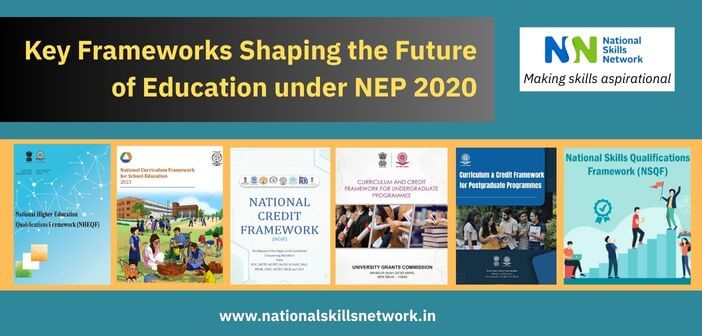The National Education Policy (NEP) 2020 marked a historic shift in India’s education system. Five years later, its vision of a learner-centric, skill-oriented, and flexible education ecosystem is gradually taking shape. Alongside the NEP, several states have also rolled out their State Education Policies (SEP), adapting national goals to regional priorities.
States like Tamil Nadu, West Bengal, Karnataka and more have already introduced SEPs that emphasize curriculum reforms, skill integration, and flexible pathways. Together, these frameworks are reshaping how policies are translated into action, ensuring both national coherence and regional adaptability.
This reflects a growing desire for contextualized, culturally grounded education; even as states acknowledge the shared objectives of NEP and SEP:
- Competency-based education
- Integration of vocational and skill-based learning
- Flexibility and mobility across education pathways
- Learning outcomes that are measurable and industry-relevant
The vision is bigger than a single policy; it is about building a learner-centric, future-ready education system where skills and academics go hand in hand.
To support this transformation, several national-level frameworks have been introduced in the last few years. These frameworks serve as practical tools to bring the policy recommendations into classrooms, colleges, and training institutions.
Watch the below video to explore these frameworks in detail, making it easier for teachers, students, and institutions to understand how the policy is being implemented on the ground.
Regulatory bodies behind the frameworks
The frameworks have been developed through collaboration between leading educational and skills organizations such as UGC, NCERT, CBSE, MSDE, NIOS, NCVET, and DGT. Together, they provide a structured roadmap for integrating skills with academics, ensuring quality, and creating flexible pathways for learners.
The 6 frameworks driving NEP 2020 implementation
1. National Credit Framework (NCrF)
- Enables flexible learning pathways by giving credit for both academic and skill-based learning.
- Recognizes prior learning and allows multiple entry and exit points.
- Connects school, higher education, and vocational streams into one unified system.
2. National Skills Qualification Framework (NSQF)
- An 8-level framework that recognizes diverse learning methods.
- Encourages mobility, flexibility, and progression between vocational and academic streams.
- Places vocational qualifications on par with mainstream education.
3. National Higher Education Qualification Framework (NHEQF)
- Defines certificates, diplomas, and degrees based on measurable learning outcomes.
- Focuses on consistency, quality, and competency-based progression.
- Encourages higher education institutions to promote creativity and innovation alongside academic rigor.

4. National Curriculum Framework (NCF) for School Education
- Aligns with NEP’s 5+3+3+4 structure for school learning.
- Promotes holistic, child-centered education that prepares students for 21st-century challenges.
- Chapter 9 specifically addresses vocational education at school level, ensuring that skills are introduced early in the learning journey.
5. Curriculum and Credit Framework for UG Programs (CCFUGP)
- Introduces a choice-based credit system with multidisciplinary learning options.
- Provides mobility, recognition of prior learning, and multiple entry-exit provisions.
- Builds a stronger undergraduate ecosystem with focus on employability and lifelong learning.
6. Curriculum and Credit Framework for Postgraduate Programs (CCFPGP)
- Recently launched by UGC to extend flexibility and credit-based structures to postgraduate programs.
- Encourages interdisciplinary approaches and continued integration of skills with advanced education.
Also read: NEP 2020 Implementation in Higher Education Institutions
Why these frameworks matter
Together, these frameworks ensure that NEP 2020 is not just a vision but a practical and actionable reality. They bring:
- Competency-based curriculum instead of rote learning
- Integration of skills with academics at every level
- Multidisciplinary, flexible program structures
- Recognition of learning outcomes across school, college, and vocational streams
- Stronger collaboration with industry for in-demand skills
They also ensure that the education policies are working in tandem, giving states the flexibility to prioritize local needs while staying aligned with the broader educational reforms.
References:
- National Credit Framework (NCrF)
- National Skills Qualification Framework (NSQF)
- National Higher Education Qualification Framework (NHEQF)
- National Curriculum Framework (NCF)
- Curriculum and Credit Framework for UG Programs
- National Education Policy (NEP) 2020
















